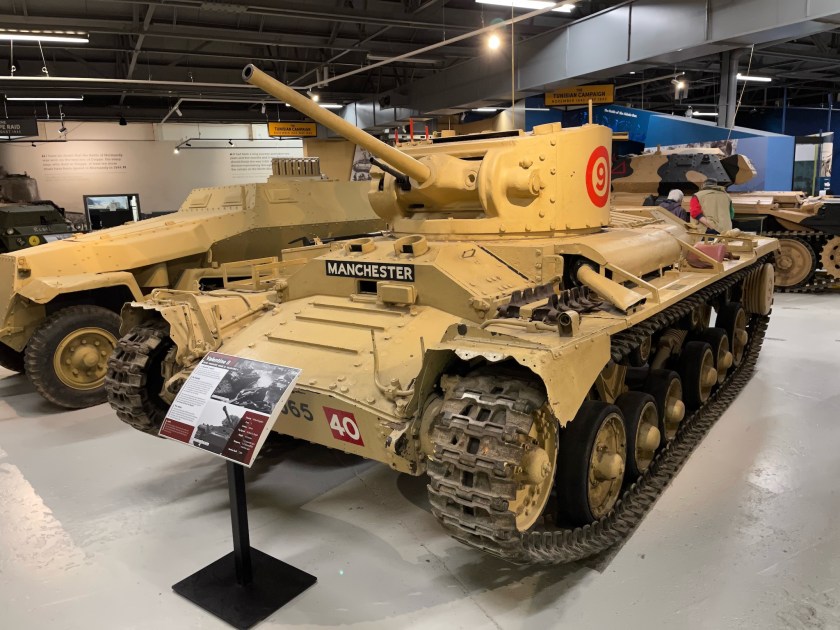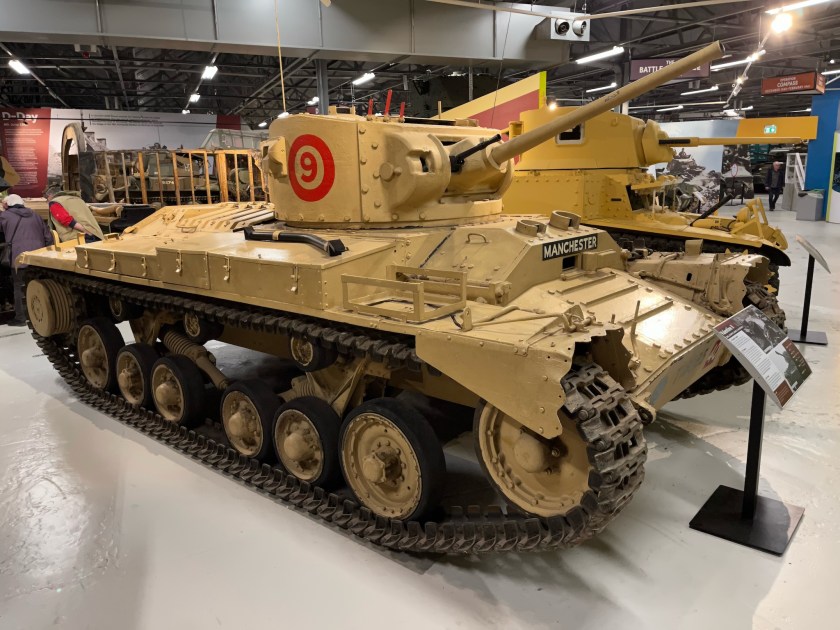This Valentine Tank was on display at the Bovington Tank Museum.
The Valentine tank was an infantry tank produced in the United Kingdom during World War II. More than 8,000 of the type were produced in eleven marks, plus various specialised variants, accounting for approximately a quarter of wartime British tank production. The many variants included riveted and welded construction, petrol and diesel engines and a progressive increase in armament. It was supplied in large numbers to the USSR and built under licence in Canada. It was used extensively by the British in the North African campaign. Developed by Vickers, it proved to be both strong and reliable.
The Valentine first entered service with the British Army in December 1941, with the 8th Royal Tank Regiment in Operation Crusader. It quickly earned a reputation as a reliable and well-protected vehicle. The Valentine’s armor was particularly effective against German anti-tank guns, and it was also equipped with a powerful 75mm gun that could penetrate the armor of most German tanks.
The Valentine was used extensively in the North African campaign, where it proved to be a valuable asset to the British forces. It was also used in other theaters of war, including the Western Desert, Italy, and the Far East.
The Valentine was not without its flaws. It was relatively slow, and its armor was not as thick as some of the German tanks. However, its reliability and firepower made it a valuable asset to the British Army.
After the war, the Valentine was phased out of British service. However, it remained in service with other armies for many years. The Soviet Union, for example, continued to use Valentines until the early 1950s.
The Valentine tank was a significant contribution to the British war effort. It was a reliable and well-protected vehicle that was used extensively in all theaters of war. The Valentine’s legacy can still be seen today, as many examples of the tank are preserved in museums around the world.
Valentine Infantry Tank Mk III at the Imperial War Museum Duxford.



